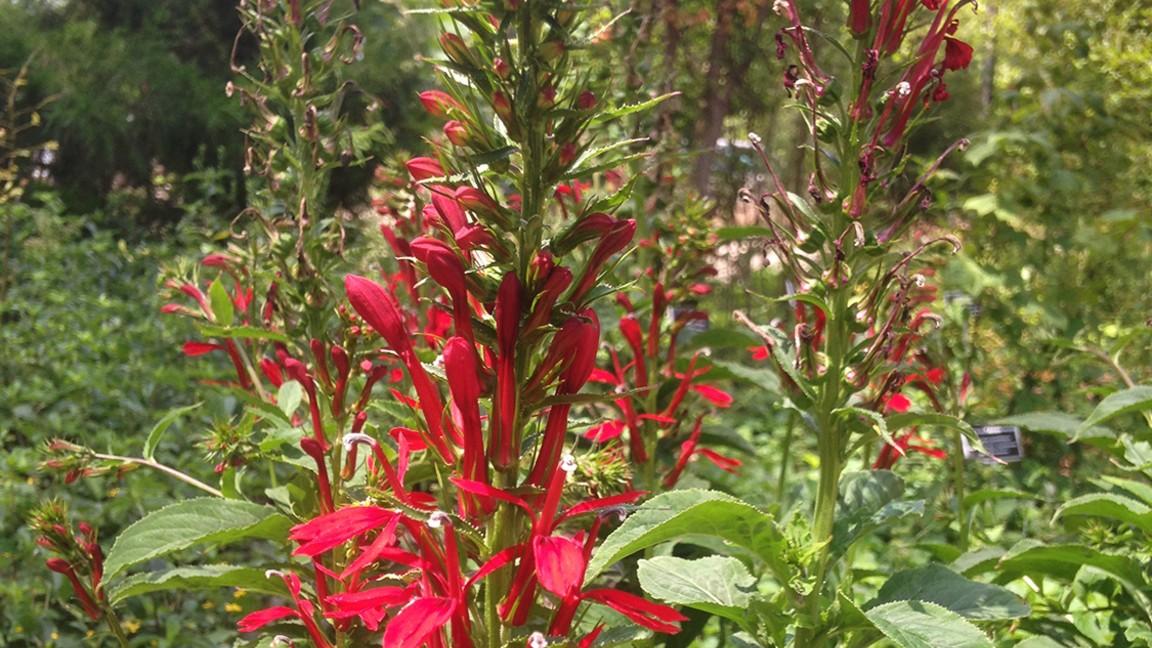About cardinal flower
Lobelia cardinalis
Perennial Forb
Lobelia Family
Maryland Distribution: Wet woods and meadows throughout Maryland.
Height: 2-4 feet
Blooms: Intense velvety red; July - September
Sun: Shade or partial shade, full sun works if soil is consistently wet
Soil: Moist to wet, rich soil of any texture.
Garden Use & Maintenance: Cardinal flower overwinters as an evergreen rosette of basal foliage. Do not allow the basal foliage to become covered with leaf litter, mulch, or other debris. If covered, the basal rosettes cannot photosynthesize and the plants starve (leading to the popular misperception that cardinal flower is short-lived). After flowering the original rosette dies back but usually creates three or more offsets, so the clump gets larger each year for several years. It is easy to sow seeds, simply take a mature stalk and shake seeds out over bare, wet soil wherever you want flowers the following year. Alternately, lightly rake or otherwise disturb surface of soil in an area where plants have grown and set seed recently, then keep that soil free of leaf litter and mulch. A few plants will flower the first year, more will flower the second. Use in shade gardens, pollinator gardens, hummingbird gardens, moist/wet rain gardens, around down spouts if watered during dry spells.
Garden Companions: In shady sites consider pairing with moisture loving ferns like sensitive fern and cinnamon fern. If sunshine and moisture are adequate, especially stunning displays can be obtained when pairing with flowers that are blue and yellow, the other primary colors. Mistflower (blue) also thrives in moist soil, and on slightly higher ground consider woodland sunflower, black-eyed susan, or whorled coreopsis (yellows).
Wildlife: Excellent nectar plant; attracts large bees, swallowtail butterflies, and hummingbirds.
Deer proof
